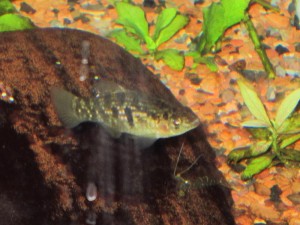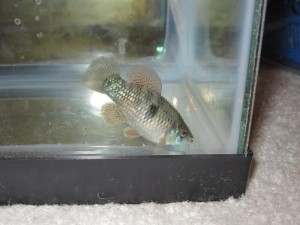One of the worst things that can happen to a fishkeeper is to walk past your tank and see a fish bloated with the scales pineconed. Yup, this is dropsy. Unlike many other illnesses, dropsy is not a sickness in and of itself. It is a symptom of something else. Unfortunately, that something else can go unnoticed, or be asymptomatic until it is too late.
Because some illnesses can be asymptomatic, even experienced aquarists can run into this problem. In fact, one of the informal feathers in the cap of an experienced aquarist is recovering a dropsical fish. Alas, this is uncommon, because dropsy almost always occurs near death.
I have recovered a fish from dropys, a siamese algae eater, about three years ago. The recommended approach is to isolate the fish carefully, as a net can tear out scales and perhaps even tear a hole in the flesh. After isolating the fish, keep in pristine water conditions for the species. That means proper temperature, pH, and hardness. It means using an airstone and a filter bag of zeolite crystals to give you a safety net on the inevitable ammonia buildup. It means frequent partial water changes.
If bloating is suspected, a tablespoon of dissolved epsom salt can be gradually added to the water. (see my post on betta bloat, other fish can experience this.)
After all that, the chances of saving the fish are not very good, but it’s worth a try. Recently, I had a Florida flagfish develop dropsy. I never did find out why the fish developed the symptoms. It did not recover, and nothing else in the tank is ill. So it goes.
This is a photo of a female flagfish (Jordanella floridae) with apologies for the hard water stains.
And here is a picture of a male flagfish after I quarantined him to a small tank. Note the pineconed scales. Click on the image to see the symptoms more clearly.
If you find a fish in this condition, you do what you can to save them, but it’s probably best to prepare yourself for the almost certain death of the fish within a day or two.
Dropsy is caused by a fluid buildup inside the body. In my experience, if a fish is going to recover, it will begin to deflate within the first day. I’d say the chances of recovery are under 1%, but that’s just a guess from my own experience.
Once the dropsical symptoms are gone, there is still a job to do. Why did the fish develop dropsy? There is an underlying cause that has to be addressed or it may recur.






